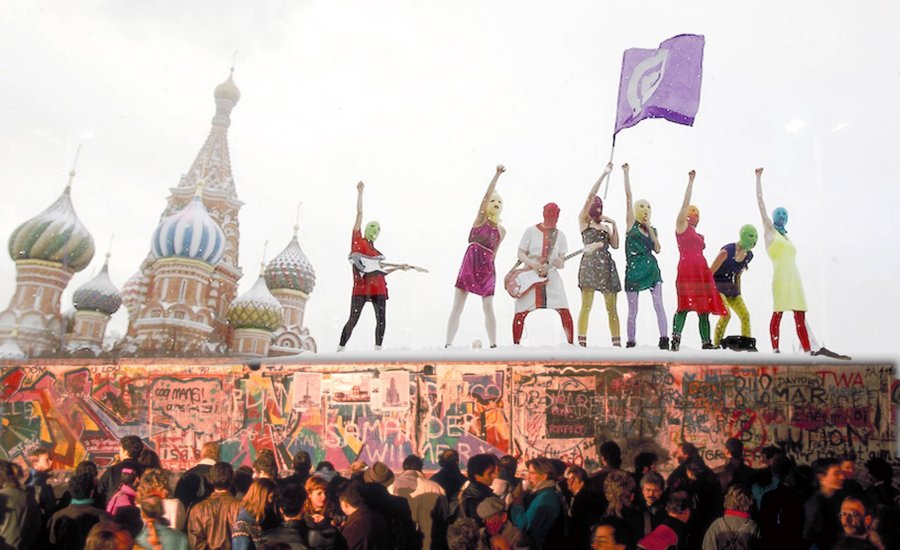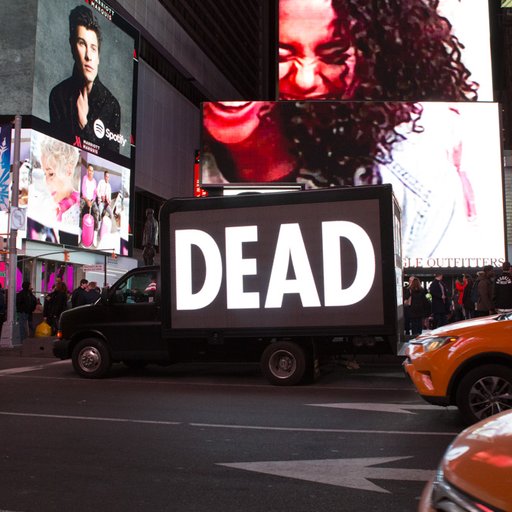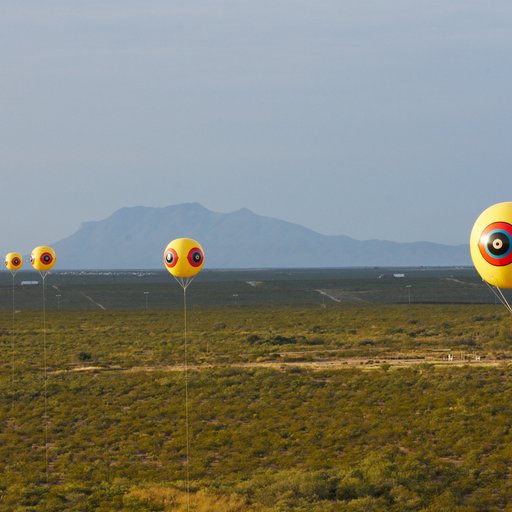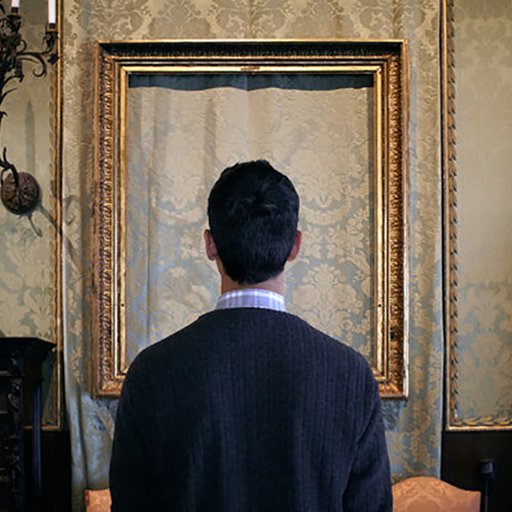It’s one thing to move someone with a work of art. It’s another thing to mobilize them. For centuries, artists have used their canvases, sculptures, films, and other creative means to espouse deeply felt political opinion. But within the genre of political art , protest art (also commonly referred to as activist art, or in some cases, useful art) seeks not only to offer commentary, but to initiate real social or political change. The question is: how can political art best have an impact on the world outside of the white cube?
After looking at some truly productive political art projects from recent history, we’ve reverse-engineered five rules of thumb for creating—and disseminating—art as a form of social and political activism. This election season, with the stakes higher than any time in a generation, artists may want to take note of these tactics.
1. Forget About the Art World
Exhibiting political art in galleries, museums, and other art-world venues can be like preaching to the choir. Though we’re generalizing broadly here, it’s usually safe to assume that most artists share similar liberal aspirations for justice and equality with their audiences (curators, dealers, collectors, critics, fellow artists.) Positioning artwork in a setting that demands the attention of a broader audience is key—either as a means of getting the word out to new people who have different opinions (and may be persuaded to see your point of view), or engaging the very community you aim to serve.
A successful example of the latter comes from Swiss artist Thomas Hirschhorn , who is internationally known for two things: using lots and lots of brown packing tape, and producing cerebral, politically charged installations and public sculptures. For the fourth (and allegedly last) iteration of a series of civic art projects dedicated to various philosophers, Hirschhorn produced Gramsci Monument in 2013 at the Forest Houses in the Bronx . Hiring residents of the housing development to help him, the artist and a team of mostly African-American and low-income community members built a complex of structures made from materials typical of Hirschhorn’s oeuvre: plywood, blue tarps, two-by-fours, cardboard, and of course, brown packing tape.
The complex—which was visited by community members, art-world professionals, and media alike—included a library of books pertaining to political and social theory, a production house for a daily newspaper, a performance stage, a café, a computer room, and a radio station. In theory and in practice, Gramsci Monument provided a platform and dissemination strategy for voices largely unheard in the art world, and in mainstream media at large. Many who were involved in the project said afterwards they were grateful for the enriching conversations it unleashed in the community.
 Thomas Hirschhorn's
Gramsci Monument
in the Bronx
Thomas Hirschhorn's
Gramsci Monument
in the Bronx
2. Know Your Community
Tapping into personal experience can certainly inform an artist's studio practice, but leaving the studio altogether to spend time in the community might be more useful to others. Cuban artist Tania Bruguera has a great track record when it comes to making visible the social consequences of oppressive power and control, using what she describes as “behavior art.”
For example, when the artist began living with five undocumented immigrants in Corona, Queens, she became deeply concerned with the obstacles facing New York's immigrant communities. In response, the artist initiated a sociopolitical campaign called the Immigrant Movement (IM) International, which is partnered with the Queens Museum of Art and Creative Time . The ongoing project involves a storefront that provides free education and serves as a headquarters for activists and members of the immigrant community. Mobilizing politicians, academics, activists, and community members, IM International has organized panel discussions, led monthly action days, wrote a manifesto, created a holistic medical program for women, and tackled domestic violence, among many other useful endeavors.
 Tania Bruguera's Immigrant Movement International headquarters in Queens
Tania Bruguera's Immigrant Movement International headquarters in Queens
3. The Street Is Your Stage
In the early '80s, graffiti on the streets of New York gave voice to an underserviced urban community. But if you think spray cans and police evasion sum up a street artist 's M.O., here are some innovative examples of artists making social issues visible in the public realm.
Conflict Kitchen by artists Dawn Weleski and Jon Rubin is a food cart in Pittsburgh that serves cuisine from countries that are in conflict with the United States. The kitchen currently serves Iranian food, which the artists package in wrappers that have printed information about the Iranian diaspora and interviews with Iranian people on them. The cuisine is augmented by performances, discussions, publications, and other events that engage the public to promote nuanced understandings of cultures too often misrepresented in the U.S. with prejudice.
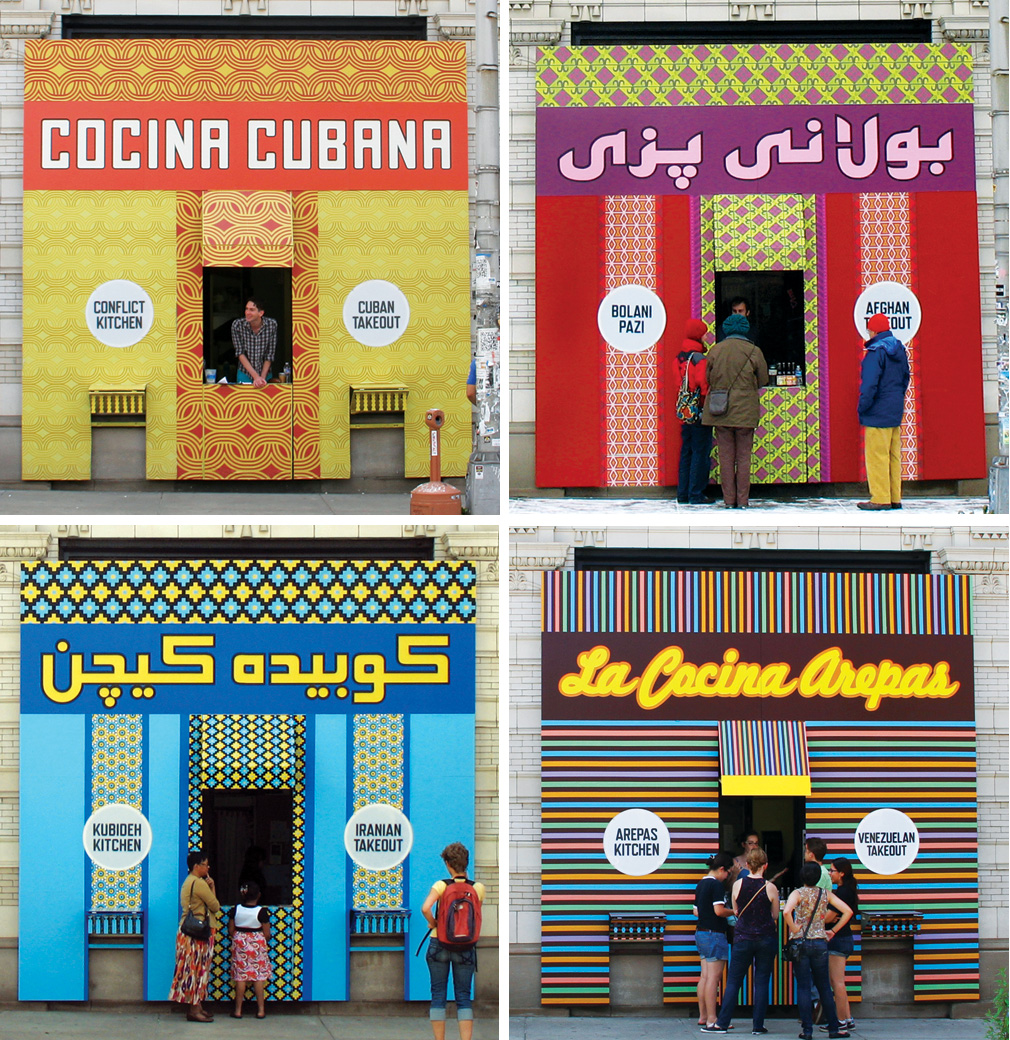 Four iterations of
Conflict Kitchen
in Philadelphia
Four iterations of
Conflict Kitchen
in Philadelphia
Employing guerilla-style tactics and sporting gorilla masks to conceal their identities,
the
Guerrilla Girls
were formed in 1985 by a group of anonymous
feminist artists
who wanted to raise awareness for issues facing marginalized groups in the art world, namely women and people of color. Intervening in public space by way of posters and billboards, their graphic, text-heavy images combated sexism and racism with slogans like "Do women need to be naked to get into the
Met Museum
?" Printed on buses, bumper stickers, billboards, and t-shirts, this particular slogan brought attention to the fact that women were (and still are) largely left out of the art cannon.
 Guerrilla Girls billboard
Guerrilla Girls billboard
4. Social Media Is Your Soap Box
Throughout history, activists have used newspapers, radio, zines, and pamphlets to disseminate radical ideas and reach new audiences. During the Great Depression, leftist newspapers like the Daily Worker, New Masses , and Art Front printed activist artworks as a recurring feature, focusing on issues like labor strikes, poverty, and the lack of affordable housing. But today, social media offers free and immediate access to global audiences, and political messages have the potential to go viral. Use social media to share your projects, connect with allies, and get attention for your cause.
The virality of Pussy Riot , a feminist punk-rock protest group based in Moscow, has brought international attention to systemic homophobia, misogyny, and attacks on free speech in Russia. Branded by their brightly-colored ski masks that help protect their identities, the collective garnered global media coverage with their unauthorized performance in protest of Russian President Vladimir Putin , and in support of LGBTQ rights, in Moscow’s Cathedral of Christ the Savior, which had supported Putin’s election campaign. They turned footage documenting the performance into a music video entitled "Punk Prayer - Mother of God, Chase Putin Away," which spread like wildfire over the Internet.
Three members of the group were later arrested and convicted of “hooliganism motivated by religious hatred” and two were sentenced each to two years in prison. The widely reported trial helped raise support from the West, and Amnesty International adopted the case along with several other human-rights groups, eventually getting the women released after 21 months of jail time.
Though breaking the law in the service of art is certainly not prudent and can lead to prison (as many artists, like Bruguera, have demonstrated), staging peaceful protests and performances in highly visible public spaces, documenting them, and sharing them online allows you to become your own media outlet, in the hopes that press will follow your lead.
5. It's Okay to Think Small
You don't have to change the world to create change. Two examples of relatively small-scale projects that prove this, incidentally (or maybe intentionally) both involve cats. (Yay! Cats!)
For a colony of kitties living in the basement of Saint Petersburg's Hermitage Museum , Swiss-born Eirk van Lieshout made all the difference. Though he may not be considered a political artist per se, van Lieshout's project for Manifesta '14 entitled The Basement improved the living conditions for a colony of cats who had inhabited the museum’s basement for many generations spanning over 200 years. The artist provided the cats with furniture and decorated their walls, and suggested (to humans) that below the visible surface of culture (i.e. the museum), we often find communities in need.
 Erik van Lieshout's cat-colony makeover project,
The Basement
Erik van Lieshout's cat-colony makeover project,
The Basement
In another attempt to improve the wellbeing of the feline species, artist Darren Bader created an installation at MoMA PS1 in which the artist filled a room with cats on loan from a local rescue shelter. The audience was invited to get to know the furry residents, who, if lucky, could be adopted and taken home at the end of the exhibition.
 Darren Bader's installation at MoMA P.S.1
Darren Bader's installation at MoMA P.S.1
6. Go Ahead, Try to Make the Next "Hope" Poster
Sometimes, very rarely, and even then often through a confluence of events utterly outside of the artist's control, a powerful artwork can become the banner of a successful movement. This was the case of Shepard Fairey 's appropriated image of a press photo of Barack Obama that has since become accepted as the ne plus ultra of political art for its role in stirring people across America to recognize the swelling wave of the campaign. It was also, arguably, the case with the famous ballerina-on-a-bull poster that Adbusters magazine created for Occupy Wall Street. Though the odds are slim that any one image (aside from a stirring photograph) will achieve a sustained place in the political conversation, social media means that a potent picture can light a thousand small fires—and may come to embody a zeitgeist.











